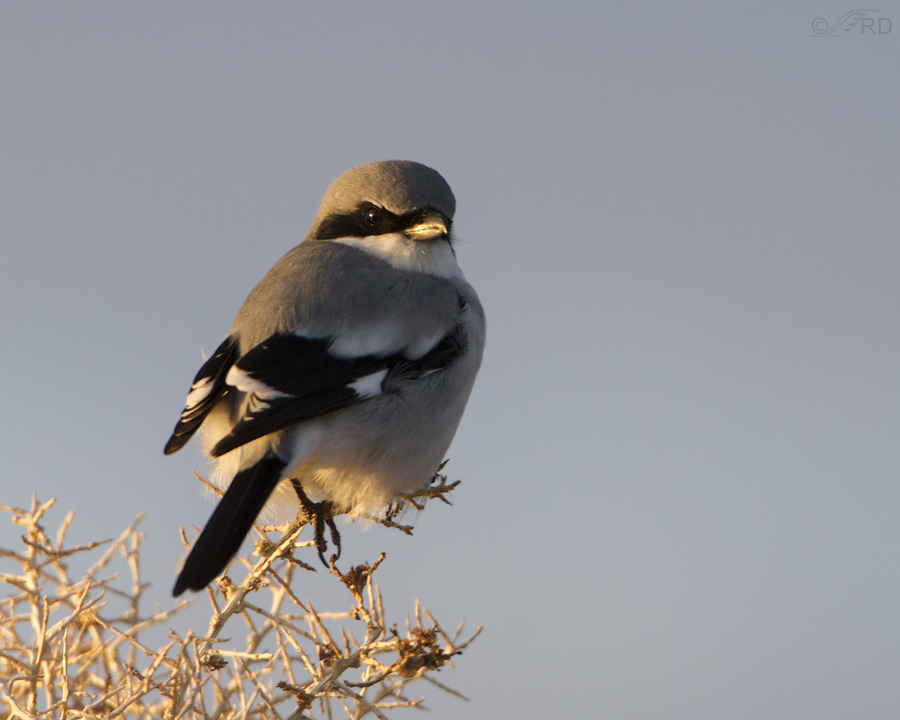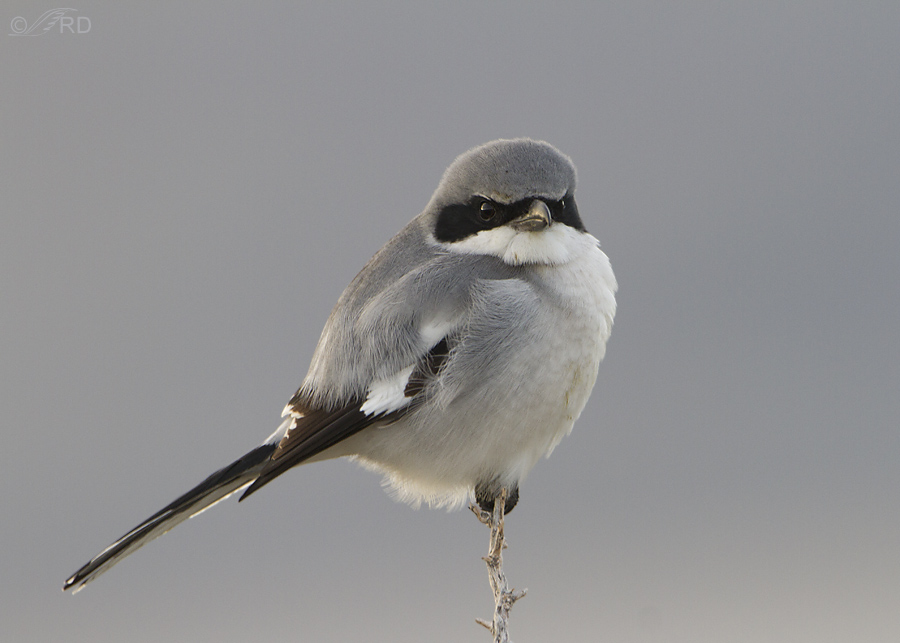Birds on Antelope Island have been few and far between lately and yesterday was no exception. But a couple of Loggerhead Shrikes saved my morning and taught me yet another lesson in light.

1/1000, f/7.1, ISO 640, 500 f/4, 1.4 tc, natural light, not baited, set up or called in
It was mostly cloudy on the island when we got there just as the sun was coming up over the mountains but there was a crack in those clouds that provided some very warm light for a few minutes just as we found this cooperative shrike. The golden light provides colors to the bird and perch – an effect that I like, especially with the dark storm clouds in the background.

1/500, f/7.1, ISO 640, 500 f/4, 1.4 tc, natural light, not baited, set up or called in
I was only able to get off a few shots before the shrike flew to another perch, which gave me side light on the bird. This is a tricky lighting situation. When the bird was facing left into the sun the bright whites on the breast and neck “blew out” (too bright with no detail) and the shadows on the back of the shrike were too dark. But when it turned to its right and looked over its shoulder at me the exposure worked much better. The problem with this pose was getting both light in the eye and good eye contact. This image was one of the few that worked. I like the contrasting cool and warm tones on the shrike.

1/250, f/7.1, ISO 640, 500 f/4, 1.4 tc, natural light, not baited, set up or called in
A few minutes later we found another shrike that was willing to pose, but by that time the sun had risen into the clouds and I thought any semblance of decent light was gone.
This is a shot that I normally wouldn’t even take because that time of the morning, and on this perch, the bird is back-lit. But with the sun in the clouds (behind the bird) there was enough light provided by some openings in the overcast to the west to provide nice, even light on the shrike. I liked this particular pose, partly because those relatively bright areas behind me were enough to get a catch light in both eyes – even in this very subdued light. I also enjoy the cool monotones throughout the image and the detail here is incredible. I wish you could see a larger version of the image…
I suspect this to be more than you wanted to read about light but I learned something yesterday morning. Don’t pass up a shot just because you assume a particular lighting situation precludes a decent image. Occasionally you can be pleasantly surprised.
Ron


Ron, this is such a timely post for me because I was just commenting to a new photographer about how I still miss aberrations in light through the viewfinder, once in a while. For example, a situation where I’ll somehow overlook the shadow of a small branch obscuring the plumage.. Seeing light is a totally different way of training the eye and it’s not something that came naturally to me. I love the illustrations you provided here and I also appreciate the comments on the last bit of diffused, even light. We get a lot of clouds in the Northwest, and I’ll be more attuned to the nuances of that winter light.
Ingrid, I remember, when I was first getting into photography, that I used to think that many of those photographers who babbled on so incessantly about the quality of light were just prima donnas trying to impress others with their knowledge and skill. I’ve largely changed my tune…
MAN, I love those birds. Just saw them Sunday, driving a long ways, and they always make me happy. SO stylish and handsome. Great shots, so thanks for the wonderful treat! =)
Thank you, biobabbler.
Thanks for the tip, Ron. I often will just watch a bird in light that I believe will produce a poor image. I won’t even try to get a shot. I’ll remember this next time.
Sharon, I know that now I’m going to be a little more flexible in when I’m willing to take the shot.
A very informative and illustrative presentation of a valuable lesson. Thanks for sharing it.
Thank you, Dwynn. I’m glad you found it useful.